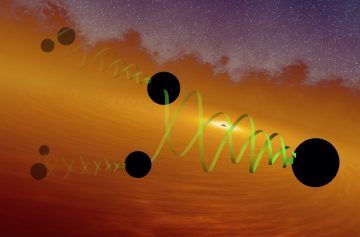Jennifer Ouellette in Ars Technica:
 The LIGO/VIRGO collaboration has picked up a gravitational wave signal from another black-hole merger—and it’s one for the record books.
The LIGO/VIRGO collaboration has picked up a gravitational wave signal from another black-hole merger—and it’s one for the record books.
The merger is the most massive and most distant yet detected by the collaboration, its signal traveling across the Universe for a billion years before reaching Earth. The merger also produced the most energetic signal detected thus far, showing up in the data as more of a “bang” than the usual “chirp.” And the new black hole resulting from the merger is the rarest of all in terms of its intermediate mass (about 150 times as heavy as our Sun), making this the first direct observation of an intermediate-mass black hole.
“One of the great mysteries in astrophysics is how do supermassive black holes form?” said Christopher Berry of Northwestern University. “They are the million solar-mass elephants in the room. Do they grow from stellar-mass black holes, which are born when a star collapses, or are they born via an undiscovered means? Long have we searched for an intermediate-mass black hole to bridge the gap between stellar-mass and supermassive black holes. Now, we have proof that intermediate-mass black holes do exist.”
More here.
